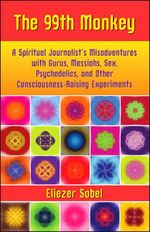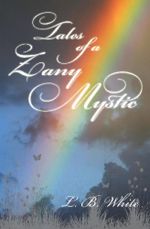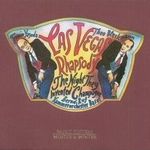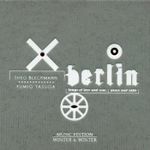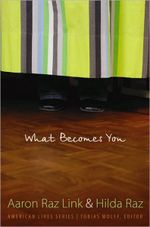A Community of Two
By Malcolm Boyd
My hefty unabridged Webster’s New International Dictionary (1960) defines community:
“A body of people having common organization or interests, or living in the same place under the same laws and regulations.”
The same dictionary defines relationship as “the state or character of being related or interrelated; a connection by way of relation…kinship; consanguinity; affinity—a state of affairs existing between those having relations or dealings.”
It seems as Gays we’ve come a long way since 1960 with both words. In Gay parlance, a “relationship” has come particularly to mean a partnership of two men as lovers or partners, living together, often constituting an extended family. At the same time “community” in common Gay experience is the Gay “world” or “neighborhood” or “culture” surrounding one’s self; an environment identified by Gay folk, institutions, bars, restaurants, publications, unofficial rules and styles.
As a Gay elder who has lived comfortably in a close Gay relationship with another man for more than 20 years, I find authentic connections between “community,” the exterior of Gay life, and “relationship” which anchors the interior.
For example, Mark, my partner, once said to me: “If I can’t tell you about it, whom can I tell?” Precisely. Yet this approach holds meaning for one’s participation in community as well as in relationship. It’s about honesty and honest communication, essential for the well-being of both. Over and over again we’ve seen a community fall apart when chaos replaced structure. God knows, the same has held true for numberless relationships.
Relationship is two persons, not one. By the same token, community is a group of persons, not one. Both move toward self-destruction whenever one person tries to establish either one-man rule or the equivalent of the Hollywood star system (with himself as star).
A key lesson for a relationship is that it is not possession. No one “owns” it or is “in charge.” Neither is any genuine, healthy community a possession that “belongs” to a dominant personality in the guise of a benevolent despot.
Gravitas enters with the emergence of serious problems. Pain and loss evoke response. This is where balance in a relationship or community can make all the difference.
“Life is what happens while we’re busy making other plans,” John Lennon wrote. Exactly. This is where commitment enters into our story. Don’t be too busy making other plans to engage life, to enable relationship, to support community and help it continue to live. But commitment is neither facile nor easy.
Jesus’ washing of the disciples’ feet is a startling and profound example showing us how to serve other people’s needs and work for peace and justice. In other words, how to make a commitment. Clearly, religious and spiritual communities must make a choice: either to stay locked inside stained-glass museums or else move into the mainstream, risking prestige and respectability in order to be a part of life that happens.
I ran headlong into such a choice in Los Angeles in June, 1990. The powerful County Board of Supervisors met on Tuesdays in their downtown quarters. They had not provided needed funds and services to deal with AIDS. This, despite the fact countless more lives were threatened, especially in the African-American and Latino communities. At this point the Los Angeles Coalition for Compassion asked clergy to engage in a “kneel-in” act of civil disobedience at a Supervisors meeting. This was designed to pinpoint the need and bring it forcefully to the attention of authorities and the general public. Five clergy responded positively.
I did partly from a remembrance of the significance of civil disobedience in the civil rights and peace movements. I was jailed in both northern and southern U.S. jails in the 60s, heeding the Macedonian call of Martin Luther King, Jr. and twice in Washington, D.C. for participating in peace masses inside the Pentagon.
On the morning of June 12, 1990, our group who were prepared to be arrested entered the Supervisors Building. Following the invocation and pledge of allegiance to the flag, we moved forward and read a prayer. It said, in part: “We pray that these Supervisors may this day be moved to hear the cries o the 112,000 persons with HIV disease in this community, whose lives are in their hands.” Then we knelt and sang “Singing for Our Lives.” One by one, we were placed under arrest and taken to jail.
I never “wanted” to take such a risk, subject myself to the overwhelming scrutiny of the combined media, or put up with the utter inconvenience and pain of a jail experience. Yet I responded, from way down in my conscience, to the role models of Gandhi and King. And to the sheer human need represented.
I thought about many things during my eleven-hour incarceration in jail, including four hours when I was chained to a bench while also handcuffed to another prisoner. The hours grew longer and longer, approaching midnight. I felt pain and discouragement. I meditated. I prayed. I acknowledged my total absence of any control. I asked for help because I felt helpless. And I received help—a centering, a trust—and an awareness problems are not insurmountable but solvable. Instead of being overwhelmed, we can take a leaf from A.A. and approach “The Big Picture” a step at a time. And believe. And work at it. Giving up the illusion of control, we can ask God to enable us to serve the cause of peace and justice in the world.
For me this was a great lesson about the meaning of community. I was not there as an individual. I belonged to a community. A community under duress. A community in peril and pain. This reminded me of these words by Thomas Merton about prayer: “Prayer and Love are learned in the hour when prayer becomes impossible and your heart has turned to stone.” Tough words. Accurate words. No sentimentality or Hallmark sweetness here. This is about when the climb grows very hard, there is no sun in the sky, one has run out of easy energy, and faith is real. At this moment commitment becomes a stark reality.
In either a community or a relationship, a sense of humor is salvific. Always retain a quality of freshness and surprise; “Getting to Know You” is equally valid after many years. Don’t try to change people, especially in a nagging or superior way. Nothing is more damaging. Be accepting. Do your part in dividing tasks. In a community this includes showing up for meetings, avoid coming late, do the paperwork and pay dues. In a relationship this can mean take out the garbage, make the bed, see that bills are paid on time and buying milk if it’s needed.
Don’t forget, in a relationship or a community, to have fun. In a relationship sustain magic and romance, get flowers, make snuggle room. In a community remember birthdays, exchange personal stories in the mailroom, arrange some outings.
Imagination is often sorely missing in the lives of both communities and relationships. A fresh start; a renewed vision. For years I’ve immensely enjoyed these words by Murray D. Lincoln in his 1960 book Vice President in Charge of Revolution: “Because any organization, once it becomes successful, is apt to lose its original drive and vision, I’ve suggested that we have a ‘vice president in charge of revolution.’ He’d be one man not responsible for any operation. He’d stand to one side, with whatever staff he needed, to pick holes in whatever we were doing and remind us of our basic philosophy, our fundamental concepts. His job would be to stir up everything and everybody, to criticize and challenge everything being done—objectives, methods, programs, results. He’d keep us so disconnected with the status quo there’d never be any doubt of our desire to seek new ways to meet people’s needs. He’d keep us on the right track.”
The secret of either a successful relationship or a working community is shared experience. Good times, bad times, ups and downs; it all comes out in the wash. Consciously create your own memories to last a lifetime. Be a good guy. Help him be a good guy. Assist your fellow workers in community to be good guys. Honesty is the best solution. The tape of your life, and his, and everybody’s is rolling. Let it happen.
This is just an excerpt from this issue of White Crane. We are a reader-supported journaland need you to subscribe to keep this conversation going. So to read more from this wonderful issue SUBSCRIBE to White Crane. Thanks!
The Rev. Canon Malcolm Boyd began his career in the production company of Mary Pickford and was the first president of the Television Producers Association of Hollywood. He is now, of course, Poet/writer-In-Residence of the Los Angeles Episcopal Archdiocese and an advisor to White Crane Institute. Last spring White Crane Books released a compendium of Boyd’s writing in The Malcolm Boyd Reader.

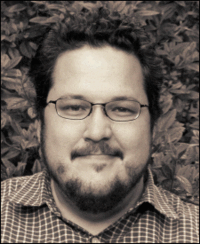
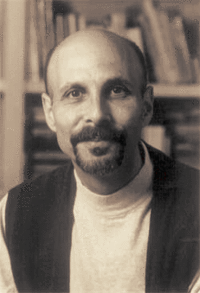 Community Trust
Community Trust